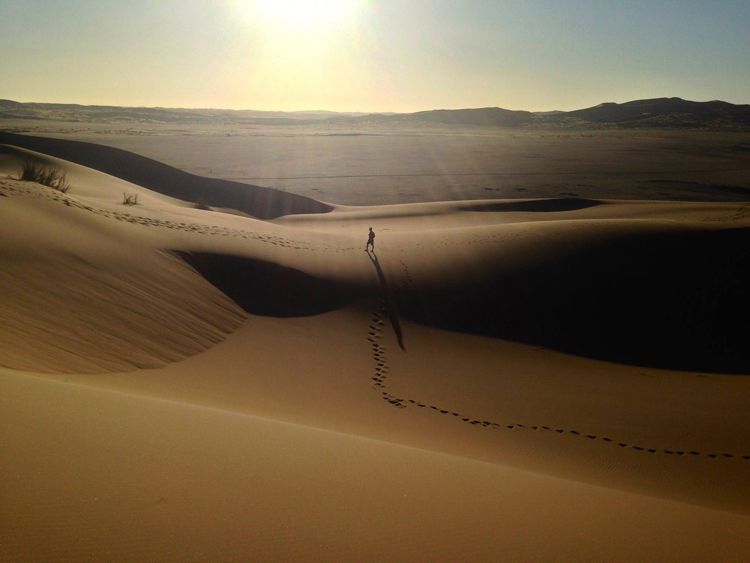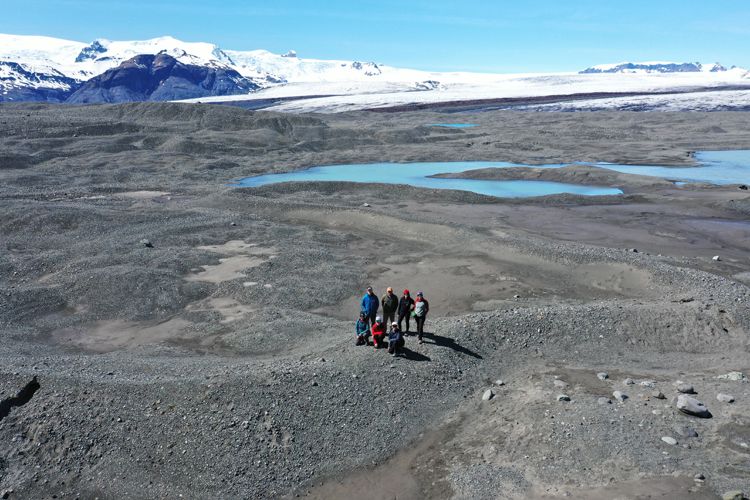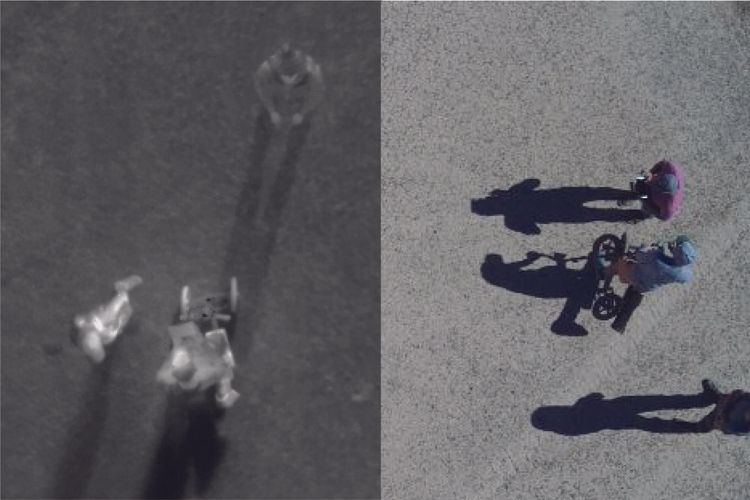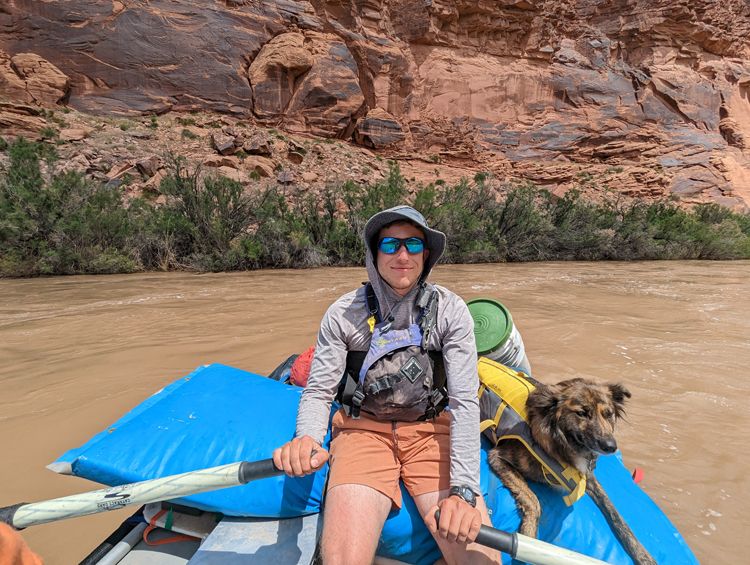Early Career Scientist Spotlight
Dr. Ari Koeppel (he/him/his)
Planetary Thermodynamicist
Planetary Systems Laboratory (693)
What inspired you to pursue a career in Planetary Science?
I have always been curious about the processes in nature that require us to take a closer look in order to understand how they work. I was drawn to space exploration by experiences of wonder and awe while stargazing during wilderness trips in the dark-skied American West as a teenager. Carl Sagan books and Star Trek: The Next Generation then romanticized the cosmic perspective in a way that I quickly latched on to.
I became involved in astronomy research as an undergraduate, and then during a semester abroad in Southern Africa, I studied ecosystem dynamics and became curious about the environmental conditions needed for life. During one project, I studied pollination mechanisms of the endemic !Nara plant and gained an appreciation for empirical fieldwork while traversing dunes in the Namib Desert. I became captivated by the geologic dynamics that both provided nutrients to the !Nara and controlled the climate, wind and ocean currents that have generated and sustained the Namib Desert’s towering ancient dune field.
When I began graduate school, I chose to combine my desire to assess habitable environments with my curiosity for extraterrestrial observation by investigating surface processes on Mars. In this field, I’m able to design projects that use analog fieldwork to inform observations for Mars and elsewhere.

Credit: Ari Koeppel
How did you end up working at NASA Goddard?
My postdoctoral advisor, Dr. Mike Smith, is a prolific Mars atmospheric scientist, and I wanted to delve deeper into atmospheric processes as they pertain to ground surface and regolith properties, as well as to get involved with Mars 2020 efforts to constrain surface-atmosphere exchange. At Goddard, I have an opportunity to learn from and collaborate with Mike and numerous other scientists on these topics.

Credit: Ari Koeppel
Tell us about the research projects you are currently working on.
I have three major research themes that I’m currently focused on. First, I am building on an experimental procedure that I developed with collaborators to study the thermophysical properties of rocks and sediment at terrestrial analog sites. The goal in this work is to relate temperatures observed at the surface (e.g., by satellites and rovers) to the grain-scale physical structure in a way that can be used to study Mars’ surface. Those properties can be used to determine the processes that formed said sediment or rock (e.g., are they sandy like desert dunes, rocky like volcanoes, or crusty like ancient dried lake beds?) and help inform past environmental conditions. To develop a diverse material library relevant to Mars, I’ve collected data at numerous analog sites from the U.S.’s desert Southwest, to Kīlauea volcano in Hawai’i, to the Breiðamerkurjökull glacier valley in Iceland.
An expansion of the thermophysical model has also enabled us to gauge depth to ice and thaw rates in permafrost settings, which will be helpful for identifying buried ice on Mars as well as identifying the concerningly widespread thaw of permafrost in the Arctic. For this effort to be valid over broad scales, however, we need well-constrained surface temperature data from satellites, which has been a challenge to determine for the cold North. Coming up in August 2024, I will be taking a three-week voyage from Iceland to Alaska via the Northwest Passage as part of a campaign to ground truth Landsat TIRS land surface temperatures. I will also be deploying drones to capture the spatial thermal patterns of thawing landscapes (such as from polygonal heat diffusion), which will be helpful for feature identification on both Earth and Mars.
Finally, in addition to field campaigns on Earth, I am also working with the Perseverance rover team to study thermal processes directly on the surface of Mars in and around Jezero Crater. I am using data from the meteorological instruments aboard the rover and satellite-derived surface temperatures to determine rates of gas and heat exchange within the regolith across the region. This effort will help improve future mission planning by assessing regional resource availability and habitability, enhancing climate simulations by identifying regional sources and sinks of energy, and updating geologic formation models for sedimentary deposits.

Credit: Christopher Edwards
What is one thing you wish the public understood about your field of work?
Earth is a system; one that miraculously happened to co-evolve landscape, climate, and life. By studying other systems like Mars, we can place the happenings of our planet in a broader context and help gauge the uniqueness of life in the universe. Perhaps we can even uncover evidence of life or environmental processes that were previously unknown, thereby expanding our understanding of what is possible. In addressing these themes, planetary scientists and astronomers work at the forefront of modern-day exploration, expanding our understanding of what it means to exist in this universe.
What is an interesting problem or hurdle that you’ve overcome in your work?
Instruments and tools don’t always work the way we want them to. I once brought a meteorological station to a hot spring site in Utah. Things seemed to be working for a bit, but after a short time, everything shut off and I couldn’t get it running again. During this ordeal, the pair of pants I was wearing also mysteriously began disintegrating. After some frustration, I began to suspect that naturally occurring sulfuric acid may have been the source of both issues, both corroding the battery components and the cotton in my pants. After a new battery and a new pair of pants everything was good to go.
Separately, just before another scheduled field experiment in the Mojave desert, I tore my Achilles tendon. Because we had been planning the work for over a year (and already delayed the work due to COVID-19 restrictions), cancelling the experiment would have been a major setback. So, after surgery, I managed to get my hands on an “all-terrain” knee scooter. The dried lakebed that we were working on was luckily just flat enough for me to wheel around to my heart’s delight and the show went on!

Credit: Ari Koeppel
If you were to expand your current research focus, what new topic would you explore?
I am fascinated with the origins, evolution, and distribution of life in the universe. Although much of my work is focused on environmental processes, I have also dabbled in experiments to understand soil microbes and their detectability in remote settings. I’d love to delve deeper into this topic and apply my expertise in energy transfer to study biotic drivers of thermodynamic disequilibrium on planetary surfaces. This could be a valuable route to searching for life in remote sensing data and is somewhat agnostic to life being exactly as we imagine based on our examples on Earth.
Tell us about a unique or interesting component of your work-life balance.
I love to be in motion outside, and spend a lot of time whitewater kayaking, backcountry skiing, climbing mountains, canyoneering, bicycle touring as well as hiking (often with my dog Gwynnie). I have also worked in various roles over the years as a wilderness guide and outdoor educator. Next time you’re at Great Falls National Park, look out for a pink and purple kayak.

Credit: Colin Quinn
Biography
Home Town:
Berkeley, CA
Undergraduate Degree:
B.A. Engineering Physics (Environmental Studies minor), Dartmouth College, Hanover, NH
Post-graduate Degrees:
M.S. Geology, The City College of New York, New York, NY
Ph.D. Astronomy and Planetary Science, Northern Arizona University, Flagstaff, AZ

Link to Dr. Koeppel's GSFC Bio
